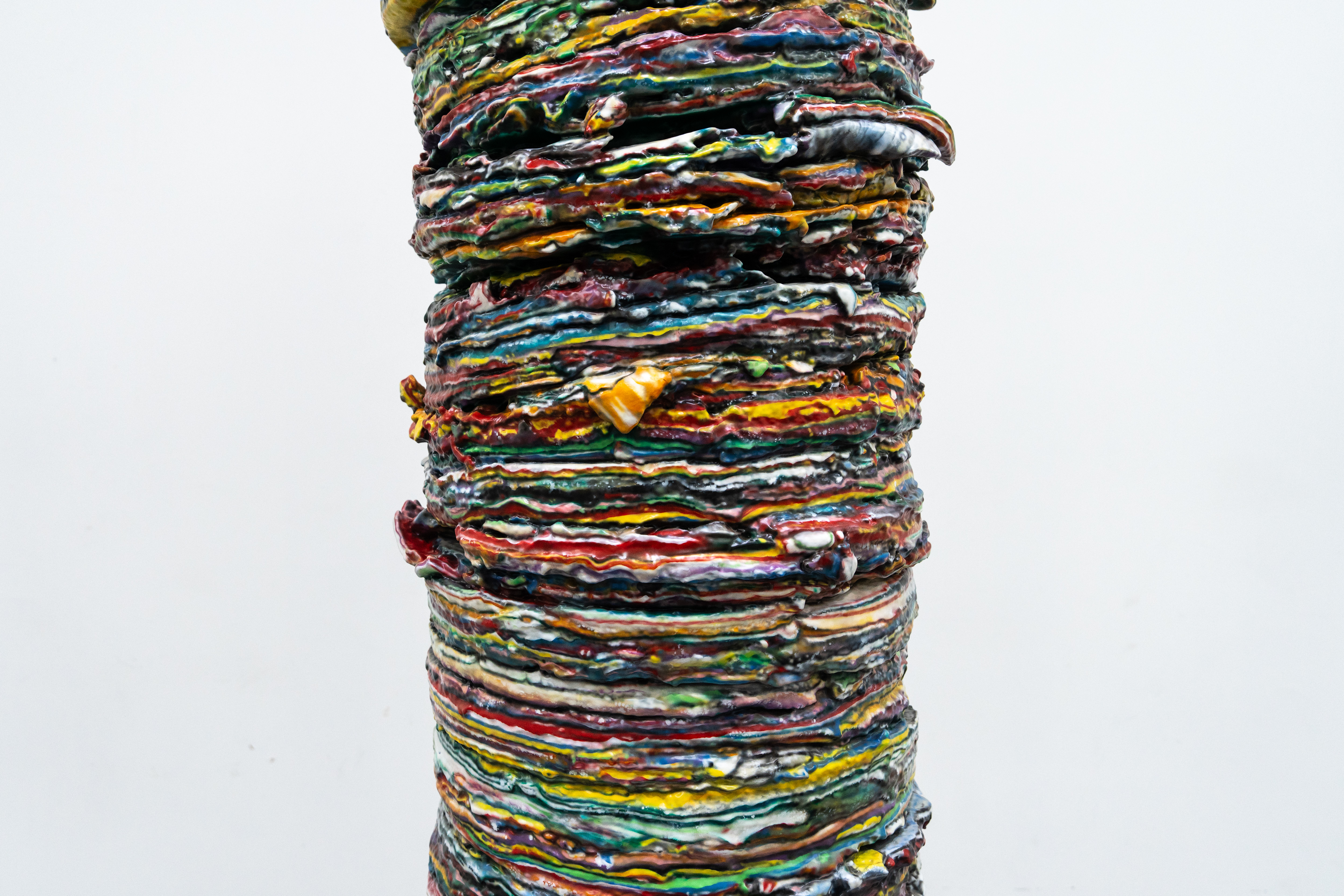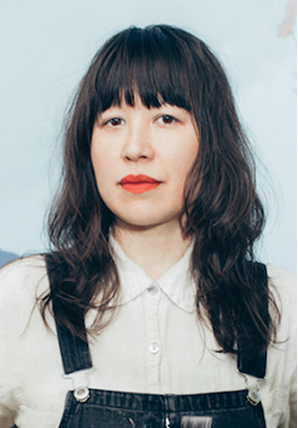Public Artwork:
Untitled Core Sample (THE FENCE)
Beginning May 2024, a new public artwork will be visible outside of CMU’s Forbes Beeler Apartments. The large-scale sculpture, titled Untitled Core Sample (THE FENCE), is a monument to The Fence, a longstanding tradition and landmark in the center of CMU’s main campus that students have used since 1923 to share and highlight messages to the Carnegie Mellon community.
Celebrating The Fence Through Art
To honor The Fence and the thousands of hands that have contributed to its legacy, artist Amanda Ross-Ho took a cylindrical core sample of its surface, capturing hundreds of layers of paint from the time of its 1993 reconstruction to 2023, the 100-year anniversary of the original fence structure. The sample was reproduced in faithful detail on an enlarged scale, creating a monument that serves as a colorful aggregated record, and historical timeline, of CMU’s cultural history and student community.
The Intersection of Art and Space
The Forbes Beeler Apartments are located at a highly visible east entrance to CMU’s campus and serve as student residences, making students one of the primary viewers of this work. The sculpture will function as an ongoing connection to the student body’s history as students live, study and engage in campus life.
"I knew I wanted to make a work that was specifically for and about CMU students," said Ross-Ho. "Contained within these paint layers are histories, both local and global, personal and shared, and the many varied perspectives of the diverse CMU student body."
“Amanda has a long history of creating art that identifies and monumentalizes objects that are emblematic of a particular place and community,” said Elizabeth Chodos, CMU’s Johnson Family Public Art Curator. "The work she created underscores the vibrant and rich student life that upholds campus culture, and it’s an honor to have it at CMU.”
Learn more about CMU’s public art selection process.
How the Work Was Created
- A five-by-one-inch core sample was taken from The Fence.
- The core sample was captured in a high-resolution 3D scan. The scan was upscaled and refined in a digital post-production process.
- The 3D scan was enlarged, and the file prepared for 3D PMMA printing.
- The PMMA prints were directly cast in bronze via a “lost wax” method of casting. The bronze castings were assembled and welded together.
- A mounting structure, using stainless steel angle with welded nuts, was fabricated and welded into the bottom of the sculpture to allow attachment to a provided plinth.
- The sculpture was fastidiously hand-painted with automotive solvent paints and protected with a final clear coat.
About the Artist
Amanda Ross-Ho’s work is a form of experimental archival research, driven by conflicting impulses towards sentimentality and clinical objectivity. She works across modalities: building monuments to artifacts, orchestrating installational tableaus, engaging public space and enacting performative gestures. Embracing contradictions between forensics and theatre, she closely analyzes, disarticulates and exaggerates artifacts into poetic forms. Her work aims to monumentalize the transitory relationships between time, form and witness, reshaping a conventional long view and preserving the complex collateral of time into alternative archives of anomalous memory.
Ross-Ho was born in Chicago in 1975. She currently lives and works in Los Angeles. Ross-Ho has exhibited widely in museums and galleries worldwide, including solo exhibitions at Kunsthall Stavanger, Stavanger, Norway (2019) Bonner Kunstverein, Bonn (2017); Vleeshal, Middleburg (2016); Praz-Delavallade, Paris (2015); The Museum of Contemporary Art, Cleveland (2014); and the Museum of Contemporary Art, Los Angeles (2012). Her work has been included in group exhibitions at The Walker Art Center, Minneapolis (2016), Orange County Museum of Art, Newport Beach (2011); Henry Art Gallery, Seattle (2010); the Museum of Modern Art, New York (2010); and the Whitney Biennial, New York (2008), among many other institutions. Learn more about Ross-Ho’s works and exhibitions.


 Artist Amanda Ross-Ho
Artist Amanda Ross-Ho